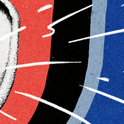by Michael Axworthy (Hurst, £25)
In 1935, Reza Shah insisted that foreign governments, when communicating with him or his ministers, should no longer refer to his country as Persia and instead call it Iran. This was to differentiate his regime from that of the decadent Qajars of the 19th century. Moreover, the term "Iran" is a cognate of "Aryan," and, of course, in the 1930s there was a lot of stress on Aryanism in Germany and elsewhere. Reza Shah was fascinated by Nazism, though Atatürk's policies in Turkey were a closer model for his high-handed western-style reforms.
Michael Axworthy, formerly head of the Iran section in the foreign office, explains the choice of title for his history in the following terms: "The centre of Iranian culture [has] moved at different times from Fars in southern Iran to Mesopotamia, to Khorasan in the northeast and central Asia, and to what is now called Azerbaijan in the northwest; and… far beyond the land of Iran itself." For this reason, he suggests, "we should set aside our usual categories of nationhood and imperial culture and think instead of Iran as an Empire of the Mind."
In 1971, Reza Shah's son and successor Shah Mohammed Reza held a spectacularly extravagant festival at the ancient sites of Persepolis and Pasargadae (Pictured, below right: a bas-relief of tributete bearers at Persepolis). Heads of state from all over the world were invited. The festival was intended to celebrate 2,500 years of Iranian monarchy and to present the shah as the heir of Cyrus the Great. But in 1979 the shah fled, and 2,500 years of Iranian monarchy came to an abrupt end, to be replaced by the mullahs. The supposed continuity of Iranian history was a short-lived imperial fiction.

Axworthy is at his best when he presents thumbnail portraits of leading Iranian writers and intellectuals. Sadeq Hedayat, author of the extraordinary horror novel The Blind Owl (1937), campaigned against the Arabic influence in Persian cultural life and the concomitant power of the clergy. He committed suicide in 1951 and his works have recently been banned by President Ahmadinejad. Jalal Al-e Ahmad, influenced by Hedayat, created the word gharbzadegi, which can be translated as "west-toxification," and he furiously attacked the unthinking adoption by Iranians of western ideas, values and technologies. Al-e Ahmad was a wonderfully entertaining polemicist and his writings deserve to be better known in the west. Khomeini himself, Iran's most famous intellectual in modern times, was far from a typical mullah, since he wrote poetry and studied mysticism, activities that his more narrow-minded colleagues looked down on. It is suggested that Khomeini's politics should be understood in terms of his ambition to become the "perfect man," a mystical figure who featured in the writings of the 13th-century Andalusian mystic Ibn al-Arabi.
Many of Axworthy's insights on modern Iran may seem counter-intuitive. After the revolution, women lost some of the legal gains that had been achieved under the shah. Nevertheless, there are more women in higher education than ever before and they have a larger role in the workplace. Some of the most effective resistance to the very different regimes of Ahmadinejad and Khatami has come from the ranks of Iran's senior clergy, many of whom have denounced nuclear weapons as an unnecessary evil. Many in the clergy have also condemned the tactic of suicide bombing.
Consistently intelligent, notably up to date and lucidly written, Empire of the Mind's account of Iran today and the challenges it faces is worth a thousand documentaries and newspaper briefing articles.











